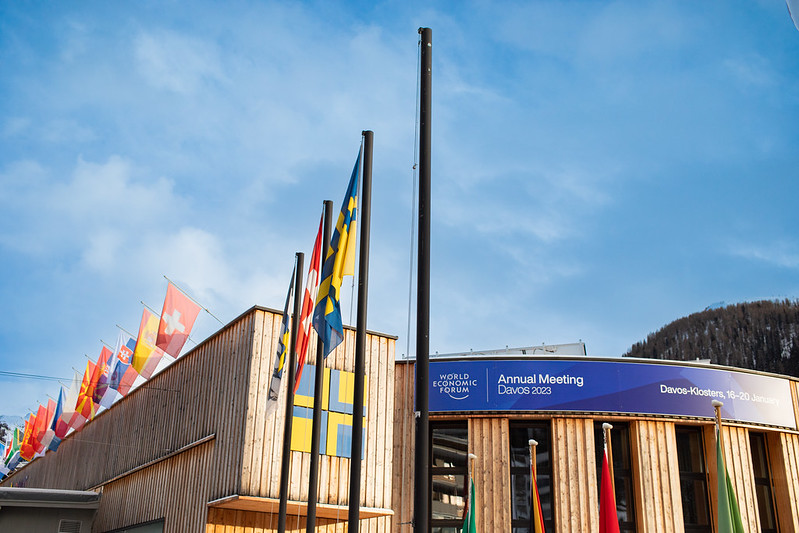David Blecken 28 Sep 2020 // 4:27AM GMT

Asia’s growth, and growth potential, has long been a dominant narrative for PR agencies, but it has largely been left to expat leaders — usually male, always white — to capitalise on it. There are signs that this is at last changing. Four major networks, including Ruder Finn, H+K Strategies, MSL and the Hoffman Agency are now led in Asia-Pacific by women from (or at least partially from) the region.
The leaders themselves see this shift as natural evolution combined with increased awareness from global headquarters of the value of local market familiarity and insight. But data suggests it has been hard won, not least given that 62% of respondents to this year’s Best Agencies to Work For survey in Asia-Pacific were female, more or less in line with global averages for the PR industry.
In Asia, furthermore, the experience of women in PR seems to reflect that of the wider business world. Female labour participation in many East and Southeast Asian countries, including China (64%), Hong Kong (52%), Indonesia (51%) and Singapore (56%) is typically higher than the global average of 48% and, indeed, the biggest PR market of the US (47%). But a 2019 McKinsey report finds that women often occupy far fewer senior managerial roles—around a quarter in Singapore and less than 5% in India and Japan, despite accounting for 40-45% of corporate entry-level positions.
A steep climb
For multinationals in Asia, cultural empathy with headquarters is understandably important, and it bears noting that three of the four leaders interviewed in this article attended universities in the US, suggesting that a Western education, while not essential, may well be helpful.
Margaret Key, who has a bicultural American and Korean background, is based in Seoul. She became chief executive of AMEA for MSL last year after holding regional leadership roles at Zeno and Burson-Marsteller. Early in her career, she says her ability to succeed in senior roles was questioned on account of being “a woman and too young”. At the time, she says, she did not think to question back.
She also met with a lack of empathy upon becoming pregnant, an experience that has spurred her to ensure women in the companies she leads do not find themselves in a similar position. Her own abilities and hard work aside, she appreciates the faith that her (male) superiors ultimately placed in her early on, but thinks she has been able to succeed largely due to supportive family. Not everyone with the same aptitude would be as fortunate.
“In Asia, women are still expected to be the caretaker,” she says. For many, “even if they want to be able to flourish in their careers, they’re unable to and have dropped out because they didn’t have anybody to take care of the children”.
In Shanghai, Elan Shou, who was promoted from Greater China MD to regional director of Asia-Pacific in 2018, says it has taken time for country heads, who are now in many cases local if not female, to rise to a point where they are ready to take on regional responsibilities. She expects to see “more and more” women follow that path.
Shou’s ascent was unusually fast. She took over the Shanghai office aged just 28. But as the mother of three children, she admits that leadership comes at a price. “It’s impossible to achieve work-life balance,” she says, although she thinks agencies should facilitate such a balance for employees who don’t necessarily want such high-flying careers. In her position, “it’s a question of how you combine work and life”.
“The biggest barrier for women in getting to a senior position is that we have to make a decision: do we want work-life balance, or are we prepared to sacrifice our time in order to be successful.”
Seoul-based HS Chung became president of Asia for H+K last year, having founded an agency when PR was a fledgling industry in Korea. WPP merged it with H+K in 2002 and she has been with the company ever since. She recalls “awkward” meetings in her early days as an entrepreneur and as recently as 10 years ago, especially with government clients, who were taken aback by the notion of a female company leader. She thinks attitudes have improved and that while sexism does still exist, attaining leadership today depends much more on “being able to deliver on the financials” and relevant knowledge than on gender. She sees more opportunity for Asian PR professionals as a whole.
“Global leadership feels it is very important for the region to have leadership that understands the region,” she says. That such thinking is new is somewhat disconcerting to say the least, but it is driven by client demands. If true local insight is seen to be lacking, “multinational companies won’t speak to you” any more.
The Hoffman Agency’s Asia-Pacific MD Caroline Hsu takes a similar view to Key, noting that in traditional societies, expectations that a woman will act as the “homemaker” persist and can seriously hinder career aspirations. Imposter syndrome can also be a factor, and one that tends to hurt women (and women of colour) more strongly than men. Hsu sees climbing the ladder as an internal struggle to overcome self-doubt. This can take the form of not feeling ready to “step up” to a bigger role, or reticence in demanding what one feels they deserve.
Hsu, who is from Taiwan, has held senior roles since 2008, when she joined Google as head of communications for Hong Kong and Taiwan. But it is only recently that she feels female leadership has become a “topic”. In that sense, her progression can be seen as more difficult than it might be, at a time when more people are conscious of the need to ensure female professionals have the same opportunities as their male counterparts.
This does mean that women are more likely to be considered for leadership positions, says Shou. But she thinks the policy is easier to implement in smaller networks and sees male “clubs” within companies as a continuing problem that is difficult to crack other than by proving one’s value through results. Apart from the blossoming and perhaps better recognition of existing talent, she does not see much as having changed. The two things she sees as central to success, especially at a more junior level, are the ability to learn and the willingness to take initiative.
“I think women need to be professionally more proactive,” she says. This means doing things without being told to do them, but to a large extent it also means becoming a better self-promoter. She notes that in team meetings, men typically do the presenting, even if they were less active than their female colleagues in the preparation. Women must overcome the tendency to recede into the shadows, which is sometimes cultural and stems from a fear of being seen as aggressive. “At the end of the day, you need to become better at presenting, be more daring and show how well you’ve been doing,” she advises.
Something that is likely to help build confidence is an increase in the number of role models. “You see more [Asian] women that are rising in the ranks,” says Key. “So when a junior or mid-level employee looks up, they see leadership that is representative of them. So they feel that it’s much more realistic for them to pursue a career.”
Hsu thinks most who rise to a senior position “are passionate about being mentors to other women leaders” which results in a “positive cycle” that at least opens people’s eyes to possibilities. Shared experience plays an important role at the higher level too. “Seeing other [relatable] leaders in these roles and being able to build that sense of connection outside of our day job has made a difference,” Hsu says. For her, the simple willingness of more people to “reach out” has helped put female Asian leadership on a “strong trajectory”.
Systemic change
At the same time, the fact that we are writing a story on Asian female leadership indicates that there is some way to go for these opportunities to become systemic. In particular, there will be no lasting change without action from male leaders as well as women who have an obvious interest in pursuing it. Shou says this would ideally include greater flexibility with a view to making the industry family-friendly; making a point of asking female employees for their views if they do not step forward; and dispensing with the ‘club culture’ that often sees women excluded from key decision-making.
Male leaders can also organise and attend unconscious bias training, says Hsu, noting that “just being aware is a start towards bridging the gap”. They should also commit to evaluating performance fairly, given that men are more often rewarded for self-promotion, and as a result their performance “is often overestimated”.
“The bias is even more pronounced when review criteria are unclear, making managers more likely to rely on gut feelings and personal inferences,” she says. “Over time, even small deviations in performance evaluation have a significant impact on women’s careers.”
Concrete data would help. “I think it is important that headquarters look to seriously embracing diversity, not just by saying [they support it] but by showing,” Key says. “Make targets focused on diversity across all levels including leadership and share the improvements. That is core to PR and our focus on transparency. The same could be said of pay and ensuring pay equity.”
She claims the system is now “very transparent” but says it’s important to consider that men and women are different, and have different requirements. “To ensure a woman can do a good job, you need flexibility in the working environment,” she says. “It’s not difficult to do.”
It is worth noting that, when examining the leadership ranks of the major PR agencies in Asia-Pacific, the days of the 'expat GM' appear to be consigned to history. At many firms, including Ogilvy, Weber Shandwick, FleishmanHillard and BCW — there has been a noticeable shift towards female Asian market leaders.
But it is also important to consider what achieving “diversity” means in an Asian context, says Chung. Understanding things like communication barriers caused by ingrained notions of hierarchy, for instance, would seem easier for an Asian leader to do than one from outside the region—provided they are committed to facilitating equality to begin with. “We [as regional leaders] should take responsibility for adding value beyond financial and making sure that Asia is well represented inside out to the global network,” she says.
From a logistical perspective, the growing acceptance of remote working combined with the gradual breakdown of regional bases is likely to make it easier for women to take on regional roles from their home markets. Where moving to a traditional hub like Singapore would serve as a deterrent to stepping up for many women with family considerations, it is likely to become less of a requirement. “I think it will make things different, no longer needing a physical office or team,” Chung says. “Location is no longer a problem. It’s the person that’s important.”
The change is encouraging, but for a new generation of female Asian would-be leaders to realise their potential still requires them to muster enough confidence to put their hands up in an industry that is still obviously male-skewed at the top. But many may well feel it isn’t worth it. Citing proprietary research from 2019 that highlighted a lack of desire among PR professionals to move into leadership roles, Prospect Resourcing co-founder and MD Emma Dale says:
“The responsibility falls to the industry as a whole to demonstrate the attractiveness of these roles with a focus on the career advantages and learning opportunities that these positions provide.” She agrees that seeing and learning from more female leaders is likely to prove inspiring.
“In Asia you do have some women that are very strong, but I think in most cases there is the question of ‘Am I ready? Am I good enough?’,” says Key. “I was very much that woman who was questioning herself.”
She said encouragement from her bosses, who happened to be male, instilled the self-belief needed to progress to more challenging roles. “So I try very hard to help others believe in themselves, to show that I think they can do something probably faster than they think they can do it.”
Hsu would like to see male leaders offer mentorship more readily. This means overcoming the fear that time spent with a junior female employee may be seen as “inappropriate”, she says. Finding a way to establish a formal mentorship programme is important, because “these personal connections can help propel careers for women somewhere down the road”.
Ultimately, lasting change will come down to similar attitudes and situational awareness industry-wide on the part of existing leaders, Hsu says. That means recognising that male and female candidates are not currently on an equal footing, and making conscious efforts. It means “nudging” people to consider an opportunity they might think is out of reach. It also means considering who is on a hiring committee and ensuring it is diverse enough to yield a fair decision. And it means having data on hand to monitor whether or not the makeup of the industry is really changing, and to set benchmarks.
“It can make a big difference when you’re looking at things with a slightly more critical eye,” says Hsu.



































.jpg)






























